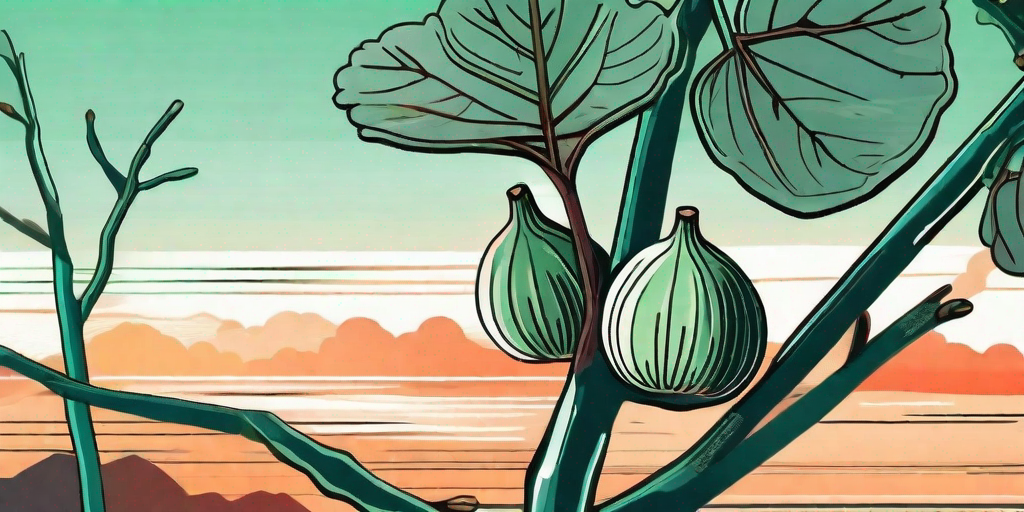
Welcome, fig enthusiasts! If you're reading this, it's safe to assume you're a lover of this sweet, succulent fruit. But, as any fig aficionado knows, the key to enjoying the perfect fig lies in the timing of the harvest. So, let's dive into the world of figs and discover the secrets to harvesting them at the perfect time.
Understanding the Fig Life Cycle
Before we delve into the specifics of harvesting, it's important to understand the life cycle of a fig. This knowledge will give you the upper hand in determining the perfect time to pluck these sweet treats from their branches.
Figs are unique in that they have two fruiting seasons per year. The first crop, known as the "breba" crop, grows on last year's wood and ripens in late spring or early summer. The second crop, known as the "main" crop, grows on new wood and ripens in late summer or early fall.
The Breba Crop
The breba crop is often smaller and less sweet than the main crop. However, it's still a delightful treat to enjoy after a long, fruitless winter. The breba crop is also a great indicator of when to expect your main crop, as it typically ripens about two months before the main crop.
While the breba crop is a nice bonus, the main event is, of course, the main crop. This is when your fig tree will be laden with juicy, sweet figs ready for the picking.
The Main Crop
The main crop is where the magic really happens. This is when your fig tree will produce the majority of its fruit, and when you'll have the opportunity to harvest the sweetest, juiciest figs.
Timing is everything when it comes to the main crop. Harvest too early, and your figs will lack the sweetness and flavor that makes them so beloved. Harvest too late, and you risk your figs becoming overripe and attracting pests.
How to Know When Your Figs Are Ready to Harvest
Now that we've covered the basics of the fig life cycle, let's get to the juicy part: how to know when your figs are ready to harvest. This is where your keen observation skills and a bit of patience come into play.
Figs are ready to harvest when they are fully colored, slightly soft to the touch, and slightly drooping from their stems. A ripe fig will also have a sweet, fragrant smell. If your figs meet all these criteria, congratulations! It's time to harvest.
A Word of Caution
While it's tempting to pluck a fig as soon as it starts showing signs of ripeness, resist the urge. Figs will not continue to ripen once they're picked, so it's crucial to wait until they're fully ripe before harvesting. Patience is a virtue, especially in the world of fig harvesting!
Also, be gentle when picking your figs. They are delicate fruits and can easily be damaged by rough handling. Use a pair of sharp, clean pruning shears to cut the fig from the tree, leaving a small portion of the stem attached.
Storing Your Harvested Figs
Once you've harvested your figs, it's important to store them properly to maintain their freshness and flavor. Figs are highly perishable and should be consumed or preserved shortly after harvesting.
Fresh figs can be stored in the refrigerator for up to two days. For longer storage, consider drying or freezing your figs. Dried figs can be stored in an airtight container at room temperature for several months, while frozen figs can last up to a year.
Drying Your Figs
Drying is a great way to preserve your figs and intensify their sweet flavor. You can dry figs in the sun, in an oven, or in a dehydrator. Regardless of the method you choose, be sure to thoroughly wash and dry your figs before beginning the drying process.
Once your figs are dry, store them in an airtight container in a cool, dark place. They'll be a delicious reminder of your successful harvest long after the fig season has ended.
Freezing Your Figs
If you have a large harvest and want to enjoy your figs throughout the year, freezing is the way to go. To freeze figs, wash them thoroughly, pat them dry, and place them on a baking sheet in a single layer. Freeze the figs until they are firm, then transfer them to a freezer-safe container or bag.
When you're ready to enjoy your frozen figs, simply thaw them in the refrigerator or at room temperature. They'll be a sweet, refreshing treat any time of the year!
FAQs
Why are my figs not ripening?
There could be several reasons why your figs are not ripening. It could be due to a lack of sunlight, inconsistent watering, or a lack of nutrients in the soil. If your figs are not ripening, try moving your fig tree to a sunnier location, adjusting your watering schedule, or adding a balanced fertilizer to the soil.
Can I eat figs straight from the tree?
Absolutely! In fact, figs are best enjoyed fresh from the tree when they are at their peak of ripeness. Just be sure to wash them thoroughly before eating to remove any dirt or insects.
How many figs can I expect from my fig tree?
The number of figs you can expect from your fig tree depends on several factors, including the age and size of the tree, the variety of fig, and the growing conditions. However, a healthy, mature fig tree can produce hundreds of figs in a single season.
Conclusion
There you have it, fig lovers! Now you're equipped with the knowledge to harvest your figs at the perfect time. Remember, patience is key, and the reward is sweet, succulent figs that are worth the wait. Happy harvesting!











